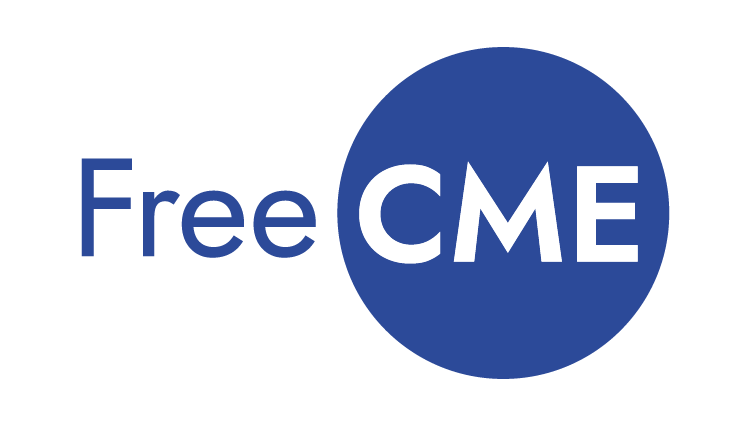
Visualizing the Problem: Ocular Manifestations of Nephropathic Cystinosis
Released On
March 12, 2025
Expires On
March 12, 2026
Media Type
Internet
Completion Time
60 minutes
Specialty
Endocrinology, Genetics, Neonatology, Nephrology, Ophthalmology, Pediatrics
Topic(s)
Pediatrics, Opththalmology disorders
This activity is provided by EXCEL Continuing Education

This activity is supported by an educational grant from RECORDATI RARE DISEASES.
Credit Available
- Physicians — Maximum of 1 AMA PRA Category 1 Credit™
- Nurses — 1 Nursing Contact Hour
All other healthcare professionals completing this course will be issued a statement of participation.
Target Audience
This activity is designed to meet the educational needs of pediatric ophthalmologists, nephrologists, pediatricians, geneticists, endocrinologists, and others who wish to improve their knowledge and competence regarding the diagnosis and treatment of ocular cystinosis.
Program Overview
This activity is designed to advance the knowledge and competence of pediatric ophthalmologists and other interested clinicians regarding the diagnosis, management, and treatment of ocular cystinosis. Featuring clinical case examples, our two experts (a pediatric endocrinologist and a pediatric ophthalmologist) will provide an overview of cystinosis and its ocular symptoms that manifest as a deposition of cystine crystals in the cornea. The faculty will review optimal management approaches of evidence-based treatments. Cystinosis is caused by mutations in the CTNS gene that makes cystinosin. Cystinosin carries amino acid cystine out of the lysosomes and when patients lack functional cystinosin, cystine builds up inside lysosomes eventually forming into crystals causing not only ocular manifestations, but also kidney decline, small stature, muscle wasting, frequent thirst, as well as other symptoms.
Learning Objectives
Upon completion of this activity, participants should be better able to:
- Review clinical forms of cystinosis
- Recognize signs and symptoms including photophobia and corneal cystinosis through discussion of eye exam regimens and screening methods
- Develop strategies to effectively evaluate and provide treatments for managing this disorder
Faculty

Bradley Miller, MD, PhD
Professor of Pediatrics
Division Director, Pediatric Endocrinology
University of Minnesota School of Medicine - Minneapolis, MN

Donny W. Suh, MD, FAAP, MBA, FACS
Chief and Professor
Pediatric Ophthalmology and Strabismus
Gavin Herbert Eye Institute (GHEI) &
Fellowship Program & Eye Mobile Program
Center for Academic Medicine
University of California at Irvine - Irvine, CA
Accreditation Statement
EXCEL Continuing Education is accredited by the Accreditation Council for Continuing Medical Education to provide continuing medical education for physicians.
Physician Credit Designation
EXCEL Continuing Education designates this enduring activity for a maximum of 1 AMA PRA Category 1 Credit™. Physicians should claim only the credit commensurate with the extent of their participation in the activity.
Nurse Credit Designation
EXCEL Continuing Education is accredited by the Florida Board of Nursing, provider # 50-619, and designates this activity for 1 nursing contact hour.
Disclosures of Conflicts of Interest
Dr. Bradley Miller has indicated that he is a consultant for AbbVie, Ascendis, BioMarin, BMS, EMD Serono, Endo Pharma, Novo Nordisk, Pfizer, Proventiobio, and Tolmar. He has received research support from Alexion, AbbVie, Aeterna Zentaris, Amicus, Lumus, Lysogene, Novo Nordisk, OPKO Health, Pfizer, Prevail, and Sangamo.
Dr. Danny W. Suh has no financial information to disclose.
EXCEL staff and the Peer Reviewer have no financial information to disclose.
Instructions for Participation and Credit
There are no fees for participating and receiving CME credit for this enduring activity. To receive CME credit participants must:
- Read the CME/CE information and faculty disclosures
- Participate in the online activity
- Submit the evaluation form
Certificates will be immediately available to the participant.
Course Viewing Requirements
Supported Browsers
Internet Explorer 8.0+ for Windows 2003, Vista, XP, Windows 7, Windows 8.1 and above
Google Chrome 28.0+ for Windows, Mac OS, or Linux
Mozilla Firefox 23.0+ for Windows, Mac OS, or Linux
Safari 6.0+ for Mac OSX 10.7 and above
Supported Phones & Tablets
Android 4.0.3 and above
iPhone/iPad with iOS 6.1 or above
Disclosure of Unlabeled Use
EXCEL Continuing Education requires that faculty participating in any CME activity disclose to the audience when discussing any unlabeled or investigational use of any commercial product or device not yet approved for use in the United States.
Disclaimer
This activity is designed for educational purposes. Participants have a responsibility to utilize this information to enhance their professional development to improve patient outcomes. Conclusions drawn by the participants should be derived from careful consideration of all available scientific information. The participant should use his/her clinical judgment, knowledge, experience, and diagnostic decision-making before applying any information, whether provided here or by others, for any professional use.
Contact Information
For CME questions, please contact: [email protected]
